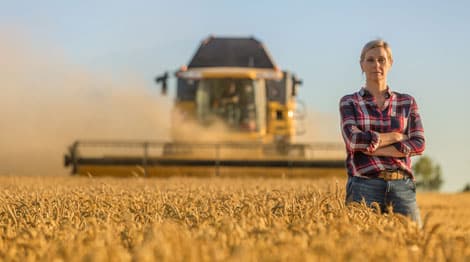“Soil health” refers to a soil’s ability to do its job – namely, to successfully support plant life season after season. Healthy agricultural soil supports crops throughout their growing cycle in several ways. Healthy soil has excellent structure, which improves both water holding capacity (how much water the soil can hold) and water infiltration (ability of water to move through the soil to where it is needed). This helps crops through abiotic stresses, such as droughts, floods, and extreme temperatures, and improves water productivity (crop yield per cubic meter of water used, i.e., “more crop per drop”).
Healthy soil supports more than just the plants growing in it. Organisms living on and within the soil all contribute to an active, living soil – this includes everything from wildlife and livestock to beneficial insects, like earthworms, to the microorganisms that make up the soil microbiome. The soil’s living, biological component is a key indicator of soil health.



